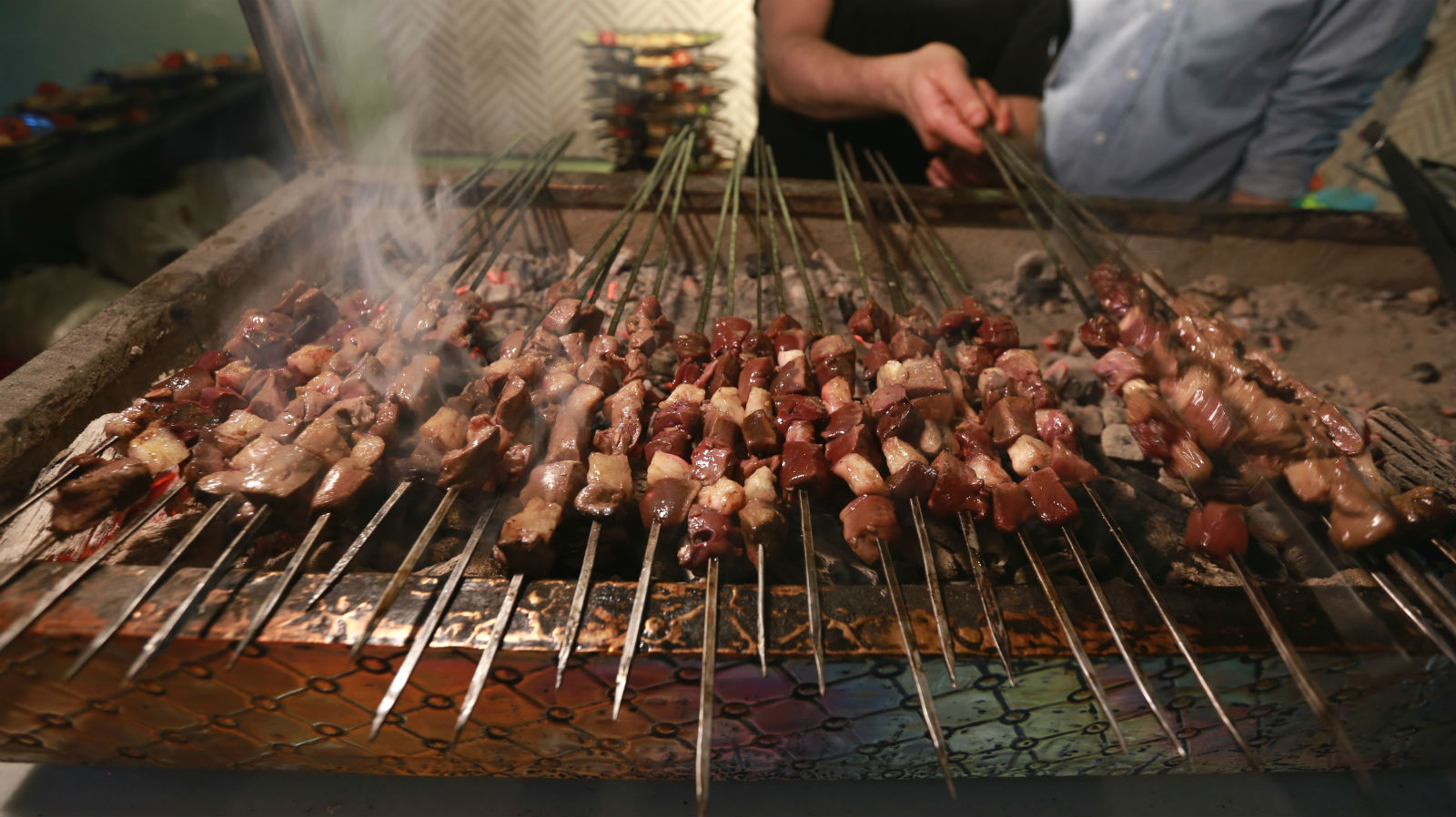Offal, aka organ meats, are about to make a comeback. Yes, I predict that brains, livers, spleens, tongues and testicles will feature heavily on the menus of Israel’s (and the diaspora’s Jewish/Israeli-style) hottest eateries by this time next year — if they aren’t already. Why? Because young chefs are increasingly inspired by traditional Jewish dishes, driving a return-to-roots style of cooking. And these old-school classics are notably innard-heavy.
Offal is an oxymoron; it’s both a poor-person food, which is why it was so popular in the shtetl, and a celebratory food, eaten on Shabbat and festivals. Many Sephardic cultures consider it a delicacy. Read on and decide for yourself.
Let’s start with an old Ashkenazi classic: chopped liver. While for me, it will always be in style, many of my contemporaries don’t feel the same. Luckily, young Jewish chefs have already set their sights on it, and may well have the power to convert millennial diners. Take Anthony Rose’s recipe in “The Last Schmaltz,” which sears the livers, then deglazes the pan with arak before blending, serving the chopped liver with thyme-scented caramelized onions.
Another well-known offal dish is the Jerusalem mixed grill. Made with chicken giblets and lamb parts, and seasoned with onion, garlic, black pepper, cumin, turmeric and coriander, this classic street food is believed to have originated sometime between 1960-1970 at one of two (now feuding) restaurants in Jerusalem’s Machaneh Yehuda Market. While the Jerusalem grill is far younger than most Jewish offal dishes, it originated in a similar way: Butchers had a surplus of unwanted offal so they sold it off cheaply, then some savvy chefs turned the offal into a desirable dish. The mixed grill was one of the first offal dishes to receive multiple modern makeovers. At his restaurant Rovi, Yotam Ottolenghi adds baharat onions and pickles, while Michael Solomonov included a Jerusalem grill-Southern dirty rice hybrid in “Israeli Soul.“
The Nosher celebrates the traditions and recipes that have brought Jews together for centuries. Donate today to keep The Nosher's stories and recipes accessible to all.
Of course, this is not the first dish based around grilled offal; Tunisian Jews liked to throw a selection of lamb or veal innards onto the grill, which they called mechoui d’abats, and Baghdadi Jews sought a similar smokiness, which they achieved by cooking chicken livers on the tandoor.
Roman Jews preferred their offal battered and fried, rather than grilled. Few know that their famed carciofi alla giudia (deep-fried artichokes) was often served alongside fried sweetbreads, livers, and — most notably — brains. North Africa’s Sephardi communities loved their brains, too, commonly serving them in an omelet called a meguina or menina on festive occasions. Meir Adoni referenced this love in his brain fricassee — a North African-French fusion dish of veal brains inside a croissant with harissa and preserved lemon — at his New York restaurant Nur.
Offal was also commonly used to add a depth of flavor to a soup or stew. Yemenite Jews — one of the few communities who continue to cook traditional offal dishes — make a soup with bulls’ penis and cows’ udders, while Eastern European Jews, particularly of Polish descent, continue to add kishke — a sausage made of stuffed beef intestine — to their weekly Shabbat cholent. A slow-cooked stew called akod is one of the better-known dishes of Tunisian Jewish cuisine, where tripe flavored with cumin, garlic, harissa and tomato paste is the star of the show. Moroccan Jews eat a similar dish on Passover, which ditches the tomato paste but adds liver, heart, and beef dumplings.
Admittedly, there are some offal-based dishes that may find it trickier to stage a comeback. Ptcha – an aspic that reached its height of popularity in shtetl-era Ashkenazi communities — is arguably top of the list. However, it’s not without hope; ptcha was actually born in Turkey in the 14th century as a peasant soup made with lamb’s feet, served hot. This, I’d wager, is a more palatable gateway (it’s basically bone broth) to the Eastern European version, which opts for calves’ feet and allows the soup to cool and set into a jelly, thanks to the gelatin in the hooves.
It only takes one dish to change your view of offal from weird and unappetizing to tasty and versatile. If livers, brains and tripe were good enough for our ancestors, not to mention famed chefs, who are we to turn up our noses? Happy eating!



